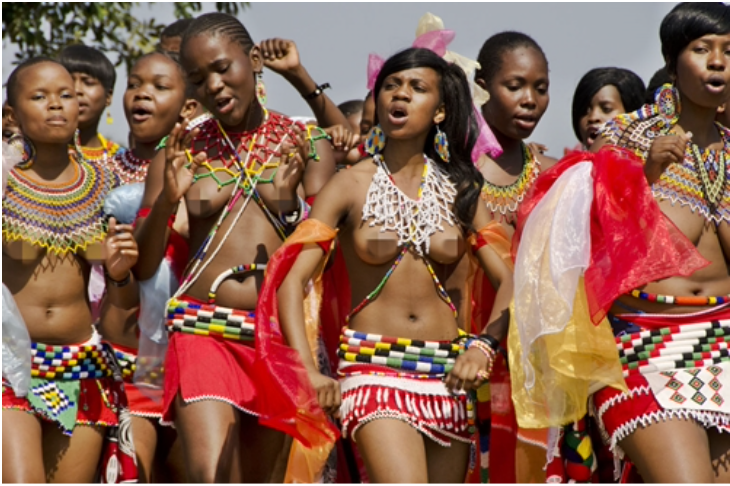
The Zulu tribe is considered the largest ethnic group in South Africa. They are extremely skilled in beading. Beaded accessories are worn by both men and women, but are traditionally made by women for their families. The Zulu are known for their beaded waist belts, called “umutsha”. They are used for decoration and adornment, and different patterns and colors often have symbolic meaning that is unique to each individual wearer.

Umutsha is made with a piece of leather or cloth as its base, which is then decorated with beadwork that is so dense and neatly packed that you can’t see the main body underneath. Although much of the symbolic meanings within the colors and patterns have been lost, it is still worth looking into them. The Zulu drew upon distinct colors and combinations to create a complex symbolic system. Although many of the meanings can be extremely personal, we can draw some generalizations with certain colors. For instance, ruby-colored beads are called inkankane, which means “whenever I see you my heart leaps up in little flames.” In general, black beads represent marriage, green beads represent commitment, red beads represent love, and blue beads represent faithfulness.


This style of waist belts allows for diversity in the patterns; some are geometric, and some can be more complicated or simpler. The structure of the belt itself can also range, from flat and rectangular shapes to rolls that can be attached to each other. They are usually fastened on the waist with leather straps or brass buttons. They can also be decorated with metal beads or plates, and larger glass beads at the ends of the straps.

Initially, umutsha was only worn by Zulu kings and royalty, but eventually it became more common amongst the masses. Colors and sizes of the beads often distinguished the different social classes and whether a belt was made before 1700 - before European interaction. For example, glass beads were only allowed to be worn by royalty up until the 1800s. There are times where you may come across umutsha that have been passed down through several generations and have traveled far. In addition, men usually wouldn't wear umutsha unless gifted to them by a significant other or loved one.
In Zulu culture, beading is considered a woman's form of expression. Young women would create these beaded belts for their themselves, siblings, friends and even boyfriends and once married– for their husband and children. This made the messages woven into each piece very personal and fully decipherable only to those close to the maker.
Sources:
https://www.metmuseum.org/art/collection/search/314792
https://www.northamptonmuseums.com/directory-record/313/
https://eshowe.com/zulu-arts-crafts/
https://www.africancraftsmarket.com/products/african-belts/african-zulu-beaded-belt.html


3 comments
I enjoyed the education/history behind the Zulu and the significance behind the beads created by this culture.
How do I get one
I love 😍 getting more information about the Zulu and Ghanaian culture love to read more